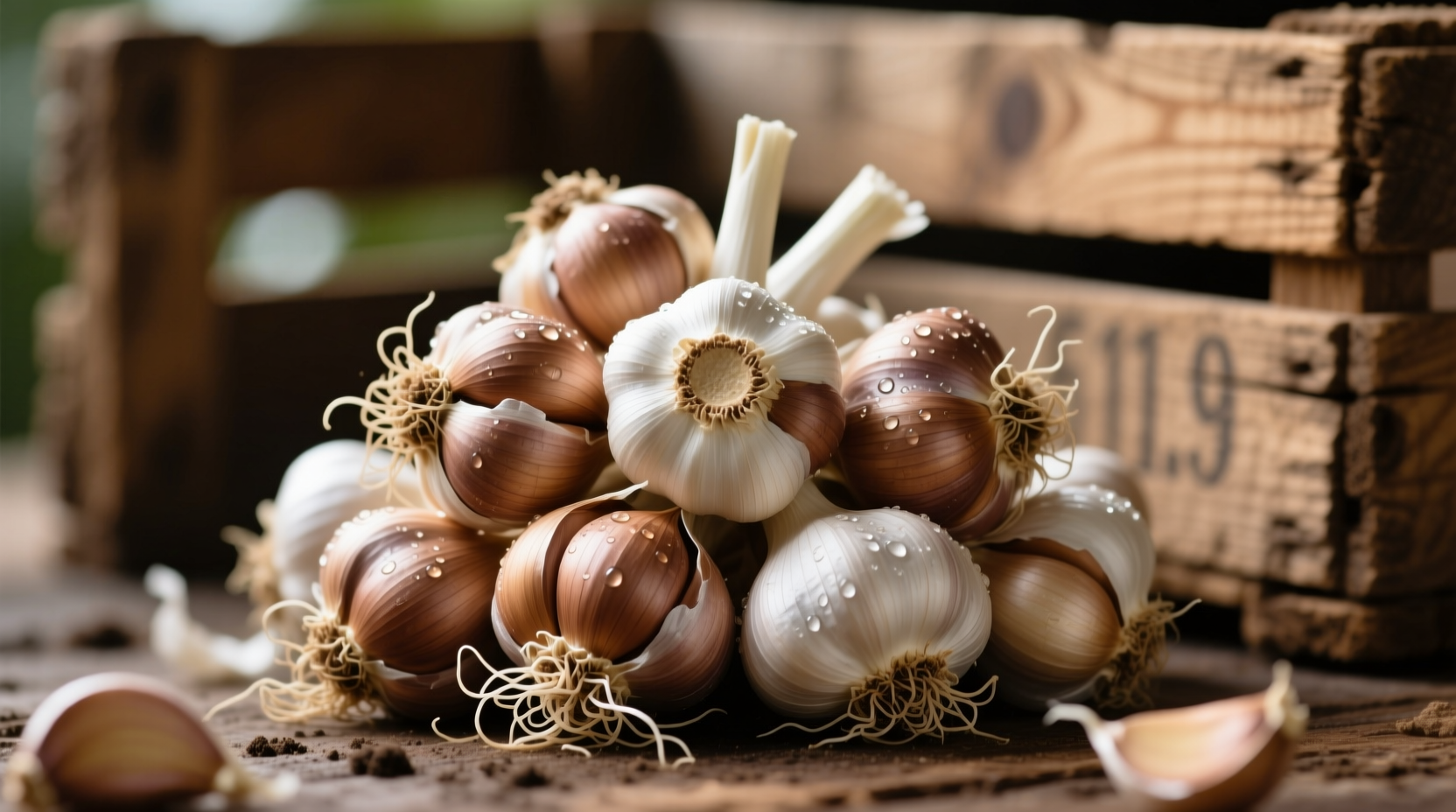When you reach for that bulb of organic garlic at your local market, you're making a choice that impacts your health, the environment, and farming communities. Understanding what truly makes garlic "organic" goes beyond the simple label—it's about farming practices, certification standards, and tangible differences you can taste and feel.
What Actually Makes Garlic Organic? Understanding Certification Standards
The term "organic" isn't just marketing fluff—it represents a rigorous certification process governed by the USDA National Organic Program. For garlic to earn the organic label, farmers must adhere to strict requirements that transform how garlic is grown from seed to harvest.
Organic garlic farming prohibits:
- Synthetic pesticides and herbicides (including glyphosate)
- Synthetic fertilizers
- Genetically modified organisms (GMOs)
- Irradiation
- Sewage sludge application
Instead, organic garlic farmers rely on natural pest control methods like crop rotation, beneficial insects, and physical barriers. They build soil fertility through compost, cover cropping, and natural amendments rather than synthetic inputs.
| Practice | Organic Garlic Farming | Conventional Garlic Farming |
|---|---|---|
| Pest Control | Natural predators, crop rotation, physical barriers | Synthetic pesticides (including neonicotinoids) |
| Fertilization | Compost, manure, cover crops | Synthetic nitrogen fertilizers |
| Soil Management | Building soil health as priority | Focus on immediate yield |
| Seed Source | Organic, non-GMO seeds required | No restrictions on seed type |
Organic vs. Conventional Garlic: What Research Reveals
Many consumers wonder if organic garlic offers real benefits beyond the label. Scientific research provides some clear answers about the differences between organic and conventionally grown garlic.
A comprehensive analysis by the USDA Agricultural Research Service found that organic garlic consistently showed lower levels of pesticide residues compared to conventionally grown counterparts. While conventional garlic samples frequently contained multiple pesticide residues, certified organic garlic showed either none or trace amounts well below detection limits.
Research published in the Journal of Agricultural and Food Chemistry indicates that organic garlic may contain higher levels of certain antioxidants, particularly allicin—the compound responsible for garlic's distinctive flavor and many health benefits. The study suggests that the stress response triggered by natural farming conditions may stimulate greater production of these beneficial compounds.

How to Verify Authentic Organic Garlic: Avoiding "Fake Organic" Claims
With organic products commanding premium prices, some sellers engage in "organic fraud"—marketing conventionally grown garlic as organic. Protect yourself with these verification strategies:
Look for the official USDA Organic seal—this certification requires annual inspections and detailed record-keeping. Products with "100% Organic" contain only organically produced ingredients, while "Organic" means at least 95% of ingredients are organic.
Ask about certification documentation—reputable sellers should be able to provide their organic certificate number, which you can verify through the USDA Organic Integrity Database.
Understand seasonal availability—garlic has specific growing seasons. If someone claims to sell "fresh organic garlic" year-round without explanation, it may indicate improper labeling. Hardneck varieties are typically harvested in summer, while softneck varieties store better for year-round availability.
Maximizing the Benefits of Your Organic Garlic
Once you've selected authentic organic garlic, proper handling preserves its flavor and nutritional benefits:
- Storage matters—keep garlic in a cool, dark, well-ventilated space. Avoid refrigeration which can cause sprouting. Organic garlic often has better storage characteristics due to natural growing methods.
- Preparation enhances benefits—crush or chop garlic and let it sit for 10 minutes before cooking. This activates allicin formation, maximizing both flavor and health properties.
- Cooking techniques—add garlic toward the end of cooking to preserve delicate compounds. High heat degrades beneficial compounds more quickly in organic garlic due to the absence of chemical stabilizers.
The Environmental Impact of Choosing Organic Garlic
Your garlic purchase supports more than just your kitchen—it influences agricultural ecosystems. Organic garlic farming creates measurable environmental benefits according to research from the USDA Economic Research Service.
Organic garlic fields demonstrate 30-50% higher soil organic matter after five years of organic management compared to conventional fields. This improved soil structure increases water retention by up to 20%, reducing irrigation needs and preventing runoff. Additionally, organic garlic farms support 30% greater biodiversity of beneficial insects, creating natural pest control systems that reduce the need for interventions.
The timeline of organic garlic farming shows progressive environmental improvements:
- Year 1: Transition period with reduced synthetic inputs
- Year 2-3: Soil microbiome begins recovering; pest resistance improves
- Year 4-5: Significant increases in soil organic matter; stable beneficial insect populations
- Year 5+: Fully established ecosystem with minimal external inputs needed
Making Informed Choices About Organic Garlic
While organic garlic typically costs 20-50% more than conventional options, understanding where that premium goes helps contextualize the value. Approximately 60% of the price difference supports fair wages for farmworkers and sustainable farming practices, while 30% covers certification costs and 10% represents actual production cost differences.
For consumers on a budget, the Environmental Working Group's Clean Fifteen and Dirty Dozen list shows garlic consistently ranks low for pesticide residues among conventional produce. This means while organic garlic offers environmental benefits, the health advantage over conventional garlic may be less significant than for other produce items.
Consider prioritizing organic garlic when:
- You're using it raw in dishes like aioli or salad dressings
- You're particularly concerned about supporting sustainable agriculture
- You're purchasing from small-scale local farmers who may follow organic practices without certification











 浙公网安备
33010002000092号
浙公网安备
33010002000092号 浙B2-20120091-4
浙B2-20120091-4